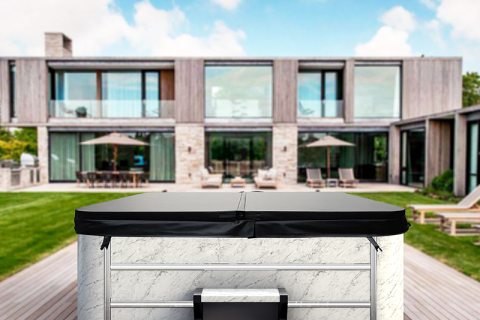
- Home
- >
News
For people who are in good health and have no obvious health problems, it is recommended to soak in a 104°F (40°C) hot tub for 10 to 15 minutes. This time is enough to enjoy the relaxing and soothing effects of a hot tub while avoiding the adverse effects of soaking for a long time.
The quietest hot tub brands and their noise levels: 1. Caldera Spas® (usually between 40-45 dB) 2. Hot Spring Spas® (usually between 38-42 dB) 3. Jacuzzi® (usually between 40-44 dB) 4. Sundance Spas® (about 40-43 dB)
10 Problems Solving Hot Tub Operation 1. Spa Not Operating 2. Spa Not Heating Even When Jets and Lights Are Operating 3. Jets Operating Weakly or Surge 4. Light Not Working 5. Jets Not Operating or erratic 6. Blue Logo "Power" Light Flashing 7. Green Logo "Ready" Light Flashing...
Survey data source: ● National Association of Home Builders (NAHB): According to a survey by NAHB, about 15% of newly built homes are equipped with hot tubs. ● Statista: According to Statista data, as of 2020, about 18% of American households have hot tubs.
Steps to prepare your hot tub for winter: 1. Drain (turn off the power → drain the drain → blow dry the pipes), 2. Clean (clean the surface of the tub → clean the filter → clean the nozzle), 3. Antifreeze measures, 4. Inspection and maintenance , 5. Regular inspections.
10 Tips for Using a Hot Tub in Winter 1. Invest in a good insurance policy 2. Monitor water levels 3. Keep water clean 4. Change water early 5. Turn off jets 6. Be smart about soaking time 7. Stay hydrated 8. Create a retreat plan 9. Smart monitoring 10. Upgrade your outdoor shelter
The size of the hot tub directly affects the number of nozzles. Generally speaking, small bathtubs (such as two-person hot bathtubs) are usually equipped with 5-10 nozzles, while large bathtubs (such as six-person hot bathtubs) may be equipped with 20 or even more nozzles.
The design and use characteristics of hot tubs make them an ideal environment for the growth of Legionella. Legionella grows most vigorously in the temperature range of 25-45 degrees Celsius, and the water temperature in hot tubs is usually within this range.
First of all, from a technical point of view, hot tubs can be placed outdoors. Many hot tubs are designed with outdoor use in mind and have waterproof, windproof and weatherproof properties.
Balboa hot tubs have three operating modes: standard, economy, and sleep. These modes mainly affect heating, which affects energy consumption. Standard mode keeps the water temperature constant. Economy mode reduces energy consumption. Sleep mode turns the heater off completely.
Modern manufacturers generally claim that their hot tubs cost around $1 per day to run, up to $50 per month. However, the actual energy cost of a hot tub depends primarily on the type and power of the heater.
The first thing to consider is whether it can withstand the test of the outdoor environment. Secondly, given the variability of the outdoor environment, durability becomes an important factor in material selection. Finally, considering comfort and aesthetics, the selection of materials also needs to consider the comfort of the human body and the aesthetics of the overall environment.












